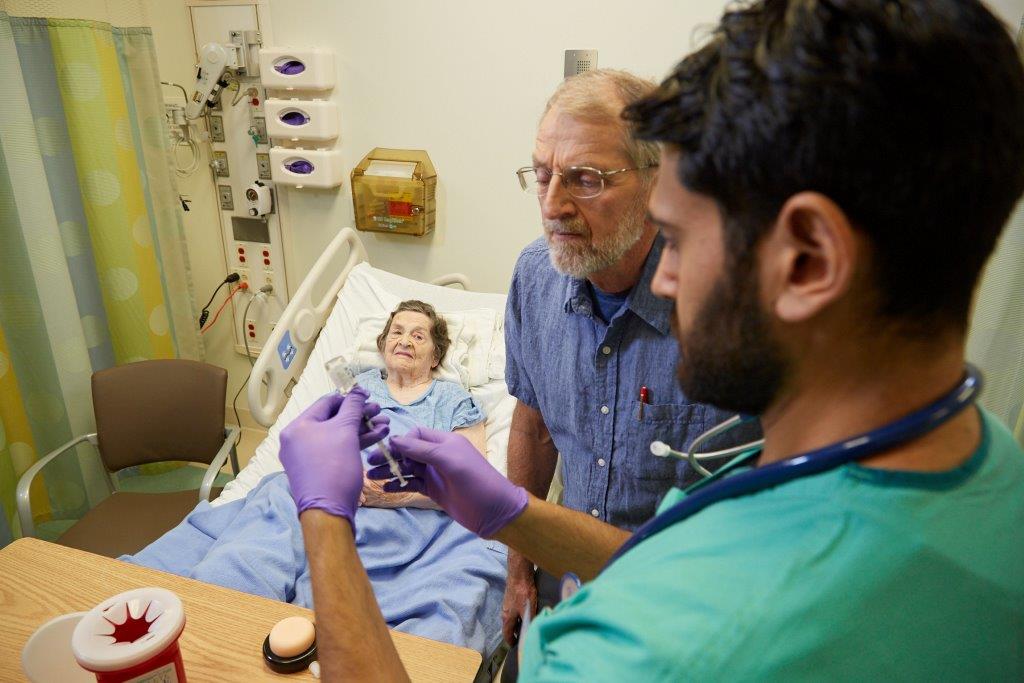AARP Hearing Center
Stepping Up to Support Family Caregivers
By Susan Reinhard, Elaine Ryan, June 7, 2016 10:32 AM

Family caregivers are doing more than ever to support their family members, neighbors and friends who have long-term or chronic health needs. They shop, cook, drive and manage finances. They bathe, dress, toilet and feed.
Most also do things they never even dreamed they would need to do — unless they went to nursing school. They give dozens of pills, eye drops, patches, suppositories, injections, even intravenous medications at home. They perform wound care and manage colostomies and tube feedings. They manipulate special equipment and figure out special diets. They deal with incontinence. And more.
And most family caregivers do some or all of these tasks with almost no instruction from anyone. They usually feel they have no choice, for they care about the people who need help with these kinds of complex tasks.
A few years ago, the AARP Public Policy Institute helped spark an important conversation. Research titled Home Alone: Family Caregivers Providing Complex Chronic Care (Reinhard, Levine and Samis, 2012) brought widespread attention to this major issue. The report highlighted the huge gap between what we expect family caregivers to do and the support we give them to do it. Grounded in this evidence, AARP state offices are advancing legislation to help family caregivers get the recognition, information and instruction they need to perform the complex medical/nursing tasks that they are often expected to perform.
Model legislation for states
The Caregiver Advise, Record, Enable (CARE) Act was specifically crafted to address this gap. The CARE Act model legislation requires hospitals to provide hospitalized patients (of any age) with an opportunity to identify a family caregiver. That individual’s name and contact information are recorded in the hospital medical record. The hospital is required to notify the family caregiver as soon as possible when the family member will be discharged or transferred — and consult with him or her about the discharge plan.
Most important, the hospital must offer the family caregiver instructions on the medical/nursing tasks that are included in the discharge plan and answer questions about them. Family caregivers can include a relative, neighbor, partner or friend — anyone the patient identifies as the person(s) who will be assisting with care post-discharge, particularly medical/nursing tasks. Patients are not obligated to identify anyone as their family caregiver.
As of June 6, 42 states and territories have introduced the CARE Act, 32 have passed it, and the following 30 have enacted it into law: Arkansas, California, Colorado, Connecticut, the District of Columbia, Illinois, Indiana, Louisiana, Maine, Maryland, Michigan, Minnesota, Mississippi, Nebraska, Nevada, New Hampshire, New Jersey, New Mexico, New York, Oklahoma, Oregon, Pennsylvania, Puerto Rico, Rhode Island, Utah, Virginia, Virgin Islands, West Virginia, Washington and Wyoming. In collaboration with a national advisory committee that will convene in June, we are exploring how these states are implementing the CARE Act and how consumers are responding.
Instruction and cultural change
We are laying the groundwork for cultural change in other, very concrete ways as well. We just released a series of videos focused on medication management to help family caregivers learn how to administer medications, including injections. We will create multiple series of videos that focus on wound care, mobility, nutrition and more. These videos are grounded in a set of principles derived from conversations with family caregivers. A soon-to-be-released publication outlines these conversations, which reveal how family caregivers say they learn best through video instruction.
We hope that another purpose for these videos will be in classroom instruction by nursing faculty, who can use them to show students how to teach caregivers. To advance this goal, we will launch the Home Alone Alliance, a collaborative that seeks to bring together a vast array of organizations from the public, private and nonprofit sectors to foster broad cultural change in how health care professionals address the needs of family caregivers — particularly when it comes to the nature of the care they provide.
Stay tuned. More to come.
Please share your thoughts with @Susanpolicy and @RoamtheDomes.































































